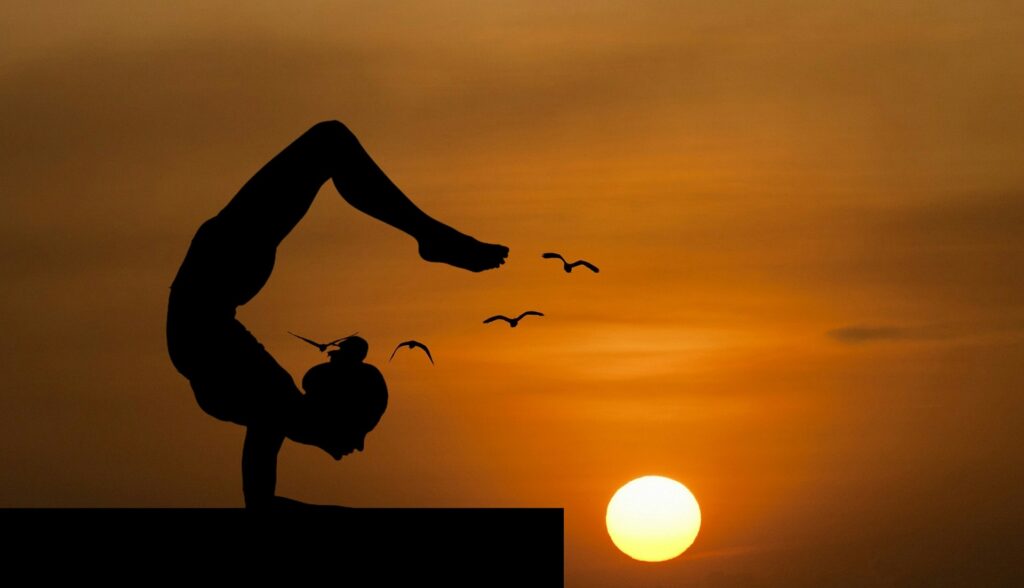
An asana is a central body posture in yoga. It originally referred to a sitting meditation pose but now includes a wide variety of positions in Hatha yoga and modern yoga as exercise. These positions range from reclining and standing to inverted, twisting, and balancing postures. The Yoga Sutras of Patanjali define asana as a “steady and comfortable” position. Patanjali, in his eight limbs of yoga, emphasizes the importance of sitting for extended periods.
In English, people often refer to asanas as yoga poses or yoga postures. These postures play a crucial role in stabilizing the mind and body through static stretching. Asanas help create a proper rhythm in neuromuscular impulses, improving muscle tone and promoting mental well-being.
Classification of Asanas
Asanas are classified into three main categories:
-
Meditative Asanas: These postures are designed for long periods of meditation and help maintain stability and comfort. Common examples include Padmasana (Lotus Pose) and Sukhasana (Easy Pose).
-
Cultural Asanas: Also known as dynamic or physical postures, these focus on improving strength, flexibility, and overall body tone. Postures like Trikonasana (Triangle Pose) and Bhujangasana (Cobra Pose) fall under this category.
-
Relaxative Asanas: These asanas are intended for relaxation and recovery, allowing the body and mind to calm down. Shavasana (Corpse Pose) is the most common example.
Principles of Asana Practice
Two core principles guide the practice of asanas:
- Stability
- Comfort
These principles show that asanas are psychophysical. While you perform them physically, they also positively impact your mind, helping you develop mental peace and focus.
Benefits of Asanas
- Effortless Performance: You should perform asanas effortlessly and maintain the posture for a relaxing period. Smooth, controlled movements help avoid jerks and prevent fatigue.
- Activating the Parasympathetic Nervous System: When you practice classical yoga postures slowly and steadily, you stimulate the parasympathetic nervous system. This leads to feelings of refreshment and rejuvenation.
- Improved Blood Circulation: Asanas promote even blood circulation throughout the body. Inverted postures use gravity to assist blood flow back to the heart, enhancing circulation and increasing blood volume.
- Enhancing Muscle Tone and Injury Prevention: Regular practice increases muscle tone, making them firm but flexible. Asanas focus on avoiding the fatigue and injuries that rapid, intense movements can cause.
- Physical and Mental Harmony: Asanas treat your body as an instrument in the journey toward self-perfection. They enhance mental faculties, concentration, and overall health by ensuring that all organs function harmoniously under the mind’s intelligent control.
The Role of Breathing in Asana Practice
Breathing is a crucial aspect of asana practice. When you combine proper breathing with relaxation, it combats muscle tiredness and improves endurance during yoga sessions. Slow, deep breaths increase the effectiveness of asanas, helping to bring both the mind and body into balance.
Conclusion
Yoga asanas go beyond simple physical exercise—they serve as powerful tools for holistic well-being. By practising stability, comfort, and mindful breathing, you can enjoy the many physical and mental benefits of asanas. Whether you’re a beginner or an experienced practitioner, regular asana practice helps you stay refreshed, rejuvenated, and in control of your body and mind.